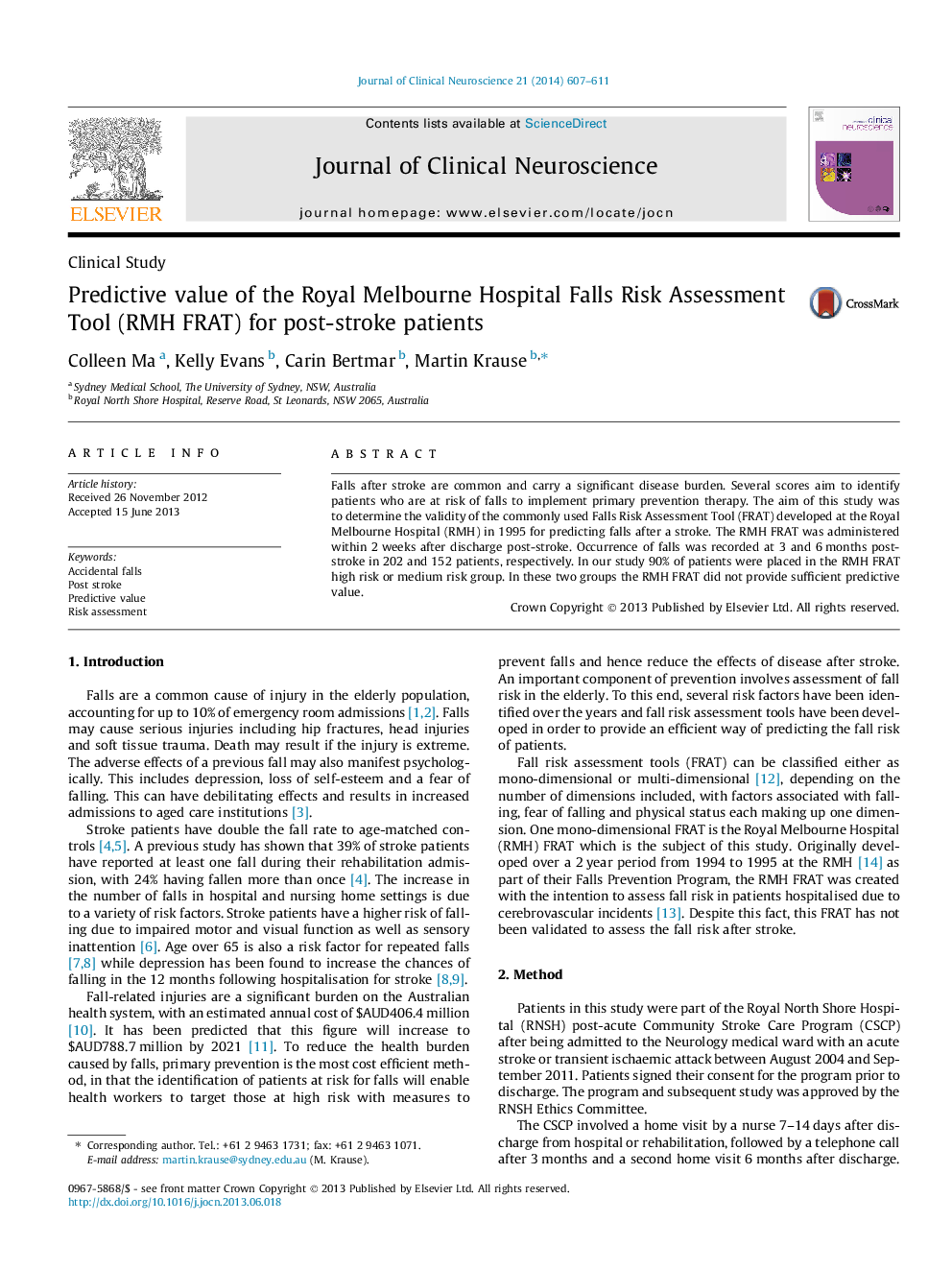| Article ID | Journal | Published Year | Pages | File Type |
|---|---|---|---|---|
| 3059607 | Journal of Clinical Neuroscience | 2014 | 5 Pages |
Abstract
Falls after stroke are common and carry a significant disease burden. Several scores aim to identify patients who are at risk of falls to implement primary prevention therapy. The aim of this study was to determine the validity of the commonly used Falls Risk Assessment Tool (FRAT) developed at the Royal Melbourne Hospital (RMH) in 1995 for predicting falls after a stroke. The RMH FRAT was administered within 2 weeks after discharge post-stroke. Occurrence of falls was recorded at 3 and 6 months post-stroke in 202 and 152 patients, respectively. In our study 90% of patients were placed in the RMH FRAT high risk or medium risk group. In these two groups the RMH FRAT did not provide sufficient predictive value.
Related Topics
Life Sciences
Neuroscience
Neurology
Authors
Colleen Ma, Kelly Evans, Carin Bertmar, Martin Krause,
